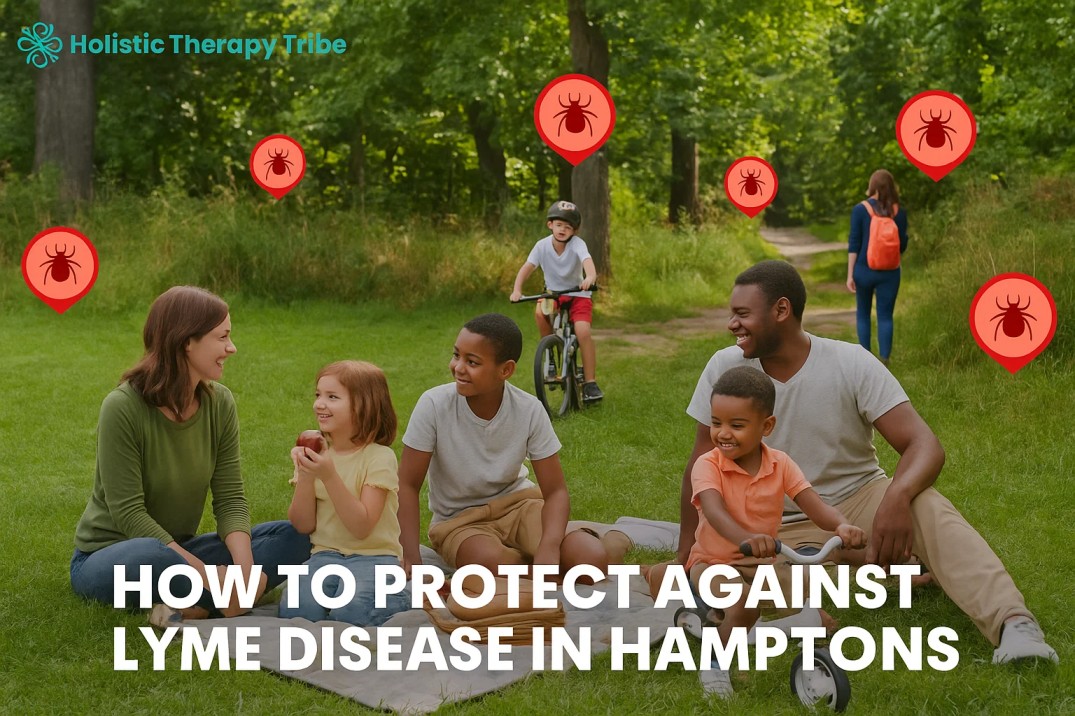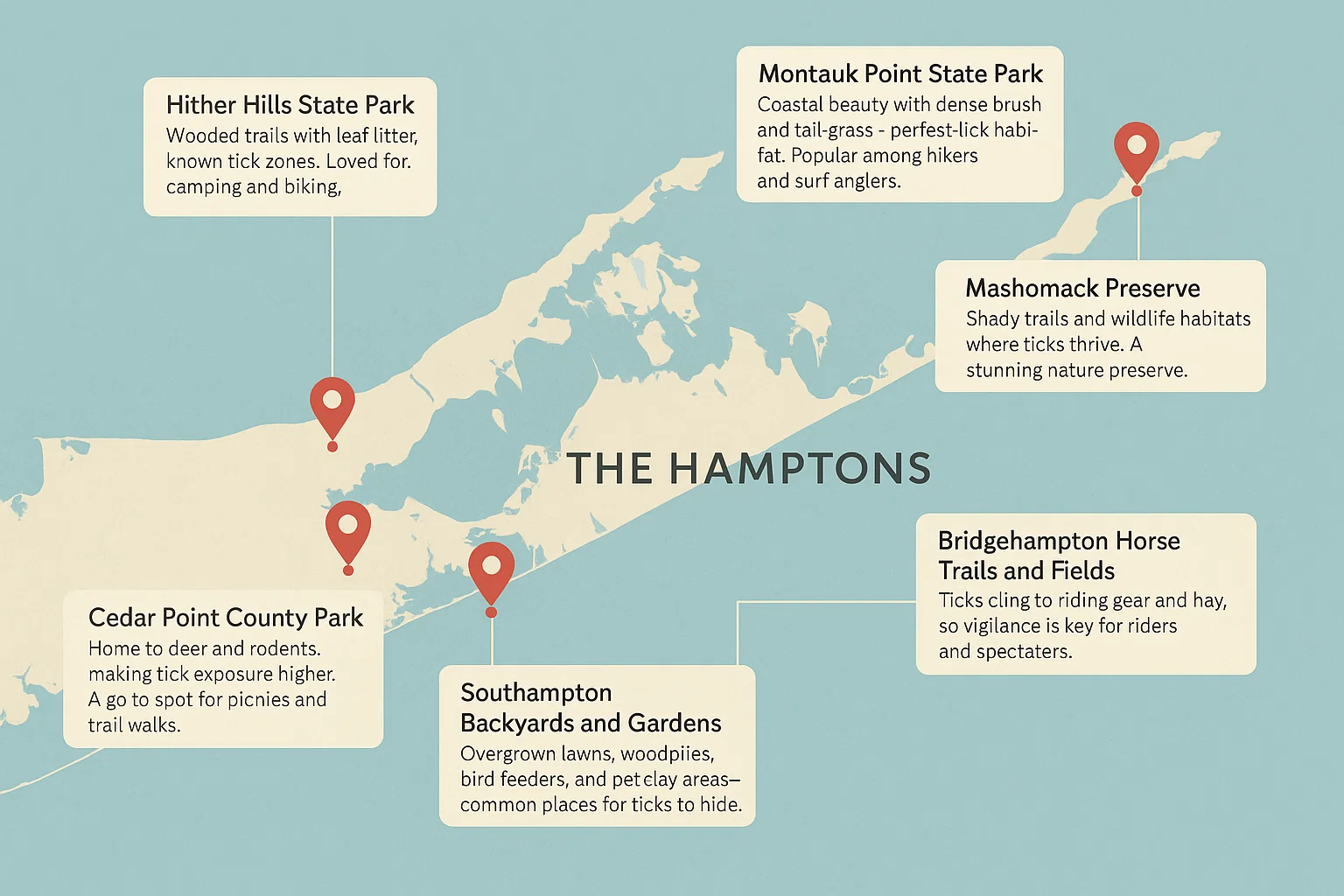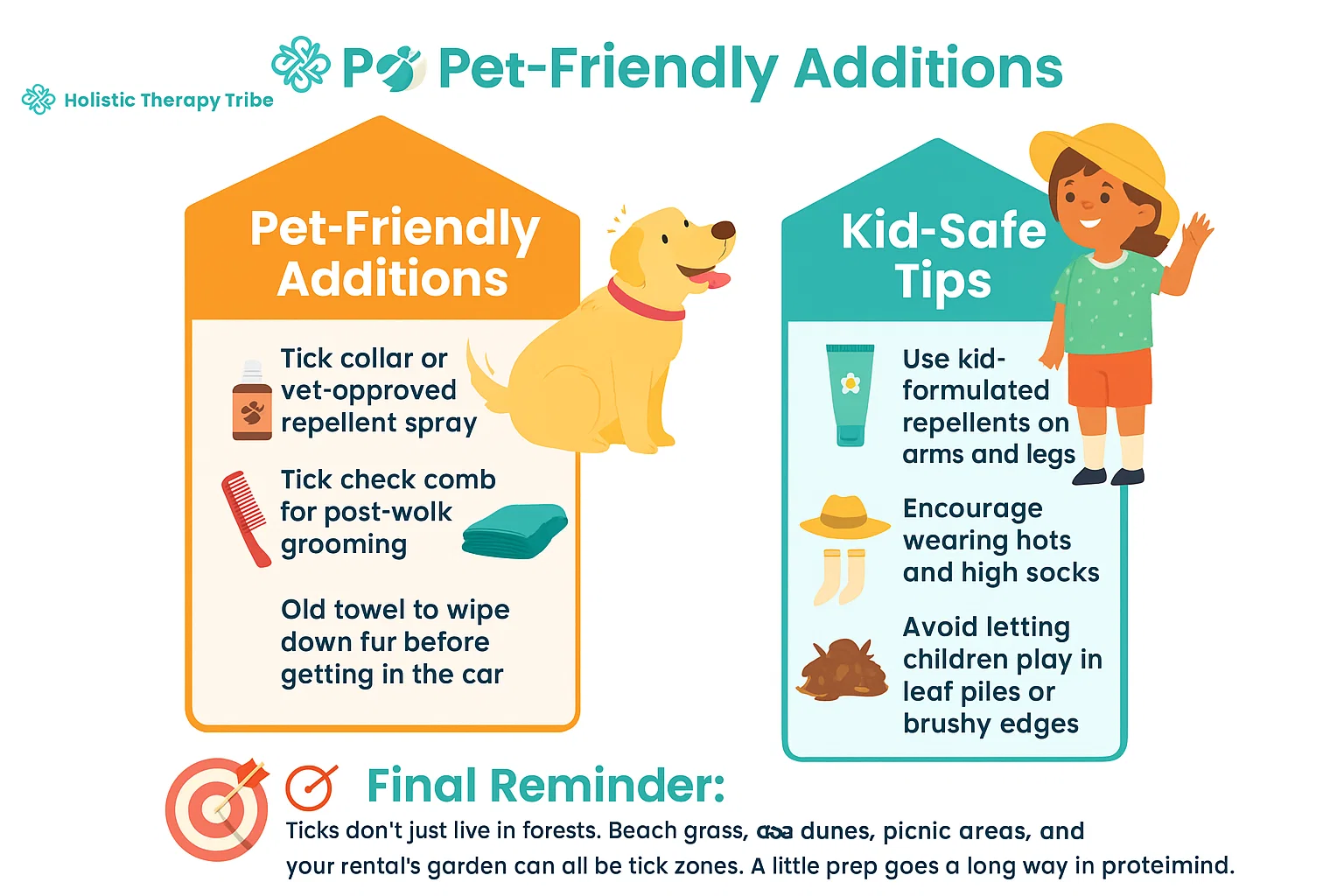
The Hamptons is truly amazing for nature lovers- rolling hills, trails and treks, and endless fun.
Nature lovers are awestruck with the scenic beauty. However, amidst these beauty is a little tiny danger that most of you might be unaware of or let us just say not detailed about– the ticks. These buggers also happen to carry Lyme disease, and can cause serious health conditions.Let us make your adventure safe and tick- free by understanding where the ticks dwell and how one can avoid them and protect themselves.
Why the Hamptons?

The center of a popular summer destination is the next area to be hot due to Lyme disease, so why is it this way? That we may understand..
Hamptons is an ideal summer getaway. Isn’t it? Bountiful in terms of landscape, forests, and beaches. I would not disagree more. Behind this fugue is a rising health hazard, and that is Lyme disease is a big possibility. Due to:
- Perfect Setting: The Hamptons are full with grassy dunes, forests, vegetation, and seaside beauty. The best habitat of blacklegged ticks (deer ticks), which transmit Lyme disease.
- Deer and Rodents ecology: The black legged ticks survive on the white- tailed deer, white- tailed rodents like mice, and the chipmunks all of which are very numerous and bountiful in the region. The deers tend to roam in the residential areas- and may leave the ticks behind.
- Climatic Conditions: In long island the weather has created a perfect habitat since conditions such as heat and moisture are suitable to make tick live active and reproduce.
- Getaway Trips: The thing is that wherever you are hiking in Hither Hills, or trailing in the East Hampton area or simply in your backyard garden, the risk of being latched on by the ticks is very likely.
- Tourism: There are seasonal visitors, beachgoers which are a part of the tourism at these places. The likelihood of getting exposed by the ticks is relatively high with increased tourism by the people being exposed to nature.
High-Risk Zones for Ticks: Trails, Parks, and Backyards

The tick-prone regions in the local map are displayed in East Hampton, Montauk, Southampton and the rest...
As mentioned above, ticks do not only moan in the woods or on the mouse / deer population. We can find them most close in our backyards, parks and our favorite summer locations. And we will know how to stay ahead of the game.
- Montauk Point State Park: This is a phenomenon being on the point of the coast with thick bushes and long grass. It is ideal to support the growth of ticks. It is famous to the hikers and the surf anglers.
- Hither Hills State Park, Montauk: The woody tracks and the leaves are the tick areas. It is loved and popular because of camping and biking.
- Cedar Point County Park, East Hampton: It is a haven of deer and rodent population thus instead of ensuring low exposure of ticks, they thrive there. It is a picnic, trail-walk and hiking go- to site.
- Mashomack Preserve, Shelter Island: It is a shady place with trails where ticks can live and a habitat of wildlife.
Prevention Kit: What Every Beach Bag and Backpack Should Include

So if you are vacationing or heading for a beach day in Montauk or hiking a nature trail in East Hampton, having a Tick Prevention Kit on hand can help and make all the difference in staying safe.
Let us have a quick check on the must- have items or “essential” items which are family- friendly and pet- safe.
Here’s what your kit should include:
| Item | Why it is important |
| Permethrin-treated clothing | Repels ticks before they ever touch your skin. Long sleeves and socks are best for hikes. |
| DEET or Picaridin repellent (20–30%) | Apply on exposed skin. Choose family-friendly versions for kids. |
| Fine-tipped tweezers | For quick removal if a tick is found. Always pull straight out. |
| Lint roller | Run over your clothes after a walk—it can catch tiny ticks before they latch on. |
| Mini magnifier | To help spot those tiny blacklegged nymph ticks. |
| Ziplock bag or small jar | Store removed ticks safely to show to your doctor if needed. |
| Alcohol wipes or hand sanitizer | Clean the bite site after removal. |
For Parents & Pet Owners: Extra Care for Kids & Dogs
It is a personalized safety guideline to families and pet lovers to have complete fun outdoors.
The Hamptons is the right type of experience to get away with families and pets. Nevertheless, they also have brought along with them a tick challenge that should be done with immediate awareness. The children and dogs are rather defenseless; of course this is not the case that the others are not. However, they are more on the ground where ticks dwell.
Children: PLAY SMART STAY SAFE
- Dress to Defend: Light clothing tends to make the detection of the ticks. When you are following or hiking through the fields and forest, wear children in long pants, long sleeves, and closed shoes.
- Tucking it in: Tuck the socks into pants. The shirt has to be tucked in to prevent any tick accessing it or contact with the body.
- Use Repellant Effectively: Keep your child safe by applying insect repellants containing DEET (10- 30 per cent) or picaridin on the parts of the body exposed to the rays of the sun. It should not be applied on the face or hands.
- Post -Play Tick Check: Be sure to scan the entire body. Inspect the head, behind the ears, the armpits, the belt areas, and the back of knees.
- No Lead Piles or tall grass: You should not loiter near the piles and tall grass. Promote cut grasses and open walks.
In the case of Dogs: TAIL- WAGGING MEASURES
- Protection Year-Round: Keep your pets year-round safe against ticks. Use tick prevention recommended by the vets in the form of oral, topical, or collar.
- Off the Grass Vegetation: Keep the dogs off the thick vegetation and keep them on the trails where the ticks lurk.
- After- Walk Routine:
- Comb and brush their hair with proper combs. Examine the belly, ears, armpits and tail base.
- A tick comb is an effective way of checking deeper and thoroughly.
- Have a spare towel somewhere that you can use to wipe them off before you are going to enter your home or vehicle.
- Keep some tweezers or tick remover in one of the pouches of your dog or in your baggage.
- Symptoms like lethargy, loss of appetite etc. are noticed. Take such symptoms to a vet.
Conclusion
- Lyme disease in the Hamptons is a real threat but with some bit of knowledge and preparation, you will equally have fun undertaking all the outdoor adventure that this region has to boast.
- It can be as simple as selecting tick resistant clothing, applying repellent or being conscious of the places in which ticks prefer to live to keep small steps towards protecting you and all those you love.
- Being well-informed and more safety conscious, both the locals and visitors can still enjoy the best of the Hamptons- in safety!
What’s Next for You?
Ready to explore a more complete path to recovery? Join the Lyme Support Network Community.
References
- Centers for Disease Control and Prevention. Lyme Disease: Symptoms. Accessed July 2023. Available from: Link
- National Institutes of Health. Lyme Disease Information Page. Accessed July 2023. Available from: Link
- Johnson L, Stricker RB. Lyme Disease: A Look Beyond the Headlines. The American Journal of Medicine. 2015;128(9):971-975. doi:10.1016/j.amjmed.2015.04.017. Available from: Link
- Garofalo K, et al. The Role of Environmental Factors in the Rise of Lyme Disease in the Northeastern United States. Environmental Health Perspectives. 2018;126(4):047005. doi:10.1289/EHP3798. Available from: Link
- Ogden NH, et al. Climate Change and the Risk of Lyme Disease in Canada. Canadian Medical Association Journal. 2020;192(6):E146-E150. doi:10.1503/cmaj.190579. Available from: Link







